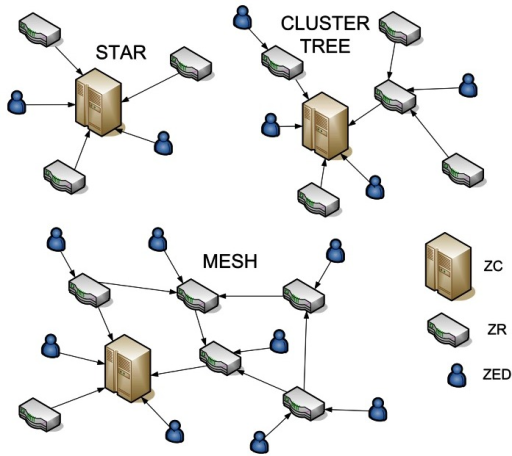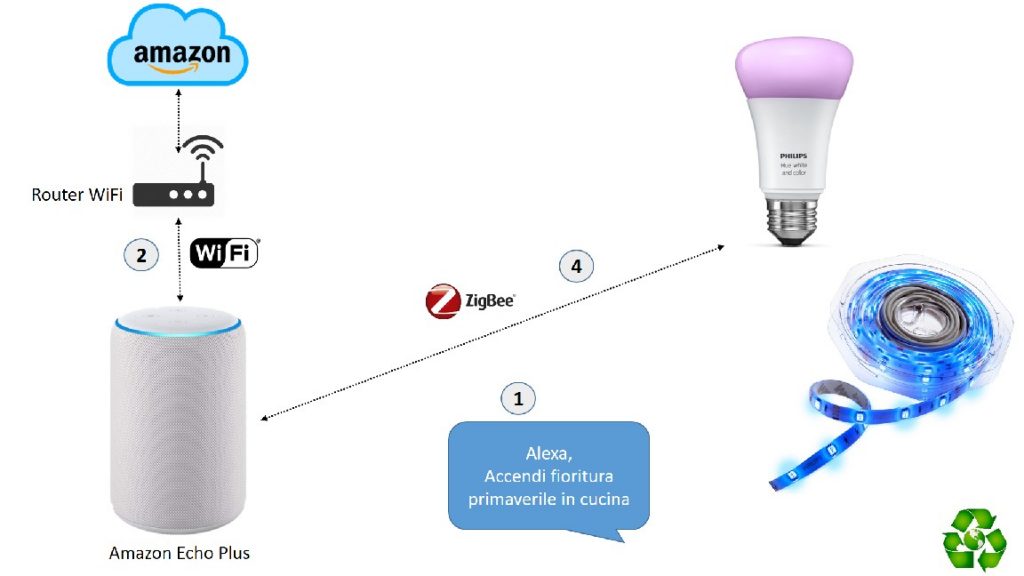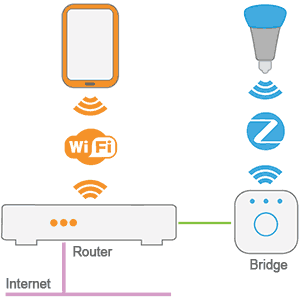What is ZigBee?
ZigBee is a digital radio-based low-power, low data rate, and close proximity wireless personal area network protocol. ZigBee is built upon the Electrical and Electronics Engineers’ Low-Rate Wireless Personal Area Network 802.15.4 (LR-WPAN) technical standard, as such, it communicates over channels in 2.4GHz, 868MHz, and 915MHz bands. Zigbee is maintained by the ZigBee Alliance, founded in 2002 to standardize and certify 802.15.4 radio communication using more sophisticated protocols. Specifically, ZigBee adapts the network and transport layers of the seven-layer OSI model of computer networking to authenticate nodes, provide encryption and security, and route data in a manner conducive to mesh networking. ZigBee was devised as a simpler and less expensive alternative to Bluetooth. ZigBee and other LR-WPAN communication protocols are preferred for their ease of installation, reliable data transfer, short-range operation, extremely low cost, and reasonable battery life, while maintaining a simple and flexible protocol.
ZigBee networks are comprised of:
Network coordinators: fully functional devices (FFD) responsible for overall network management. ZigBee networks cannot function with network coordinators, and there may only be one coordinator in a given network. Network coordinators perform the following functions:
- Select the channel to be used by the network
- Start the network
- Assign how addresses are allocated to nodes or routers
- Permit other devices to join or leave the network
- Hold a list of neighbors and routers
- Transfer application packets
Routers: another FFD, used to find the best message transfer route. This function is useful in tree and mesh topologies to expand network coverage. Routers perform all functions similar to a coordinator except the establishment of a network.
End devices: reduced function devices (RFD) operates within a limited set of the IEEE 802.15.4 MAC layer, enabling it to consume less power. End devices, also known as child devices, can either be connected to a router or coordinator. End devices perform the following functions:
- Joins or leaves a network
- Transfer application packets
ZigBee trust centers (ZTC): ZigBee trust centers provide security management, security key distribution, and device authentication.
ZigBee gateways: ZigBee gateways connect the ZigBee network to another network, such as a LAN, by performing protocol conversion. This function is essential for allowing ZigBee capable devices to connect to commercial computing devices (computers, phones, etc.) that communicate over Wi-Fi.
ZigBee Interesting Facts:
What I found interesting about Zigbee protocols its network members can be configured to follow tree, star, and mesh topologies.

Each topology has their respective advantage and disadvantage.
Many companies have signed on to be a part of the ZigBee Alliance Member Group, a cadre of high powered international tech companies. These companies have not necessarily agreed to only use ZigBee, instead, to ensure that they create devices that can operate over ZigBee’s IEEE 802.15.4 foundation. It seems as though the ZigBee Alliance has been pushing to add Chinese companies to its ranks in an effort to make ZigBee the standard communication protocol for Internet-of-Things capable devices.
The ZigBee Alliance purports ZigBee’s usefulness for:
- Home automation
- Wireless sensor networks
- Industrial control systems
- Embedded sensing
- Medical data collection
- Smoke and intruder warning
- Building automation
- Remote wireless microphone configuration
Two famous ZigBee products are:


Work Cited
National Instruments. 2020. White Papers. Accessed April 5, 2020. http://www.ni.com/innovations-library/white-papers/.
Ramya, Muthu C, M Shanmugaraj, and R Prabakaran. 2011. Study on ZigBee technology. Accessed April 5, 2020. https://ieeexplore.ieee.org/document/5942102.
Timar, Ankur. 2011. Introduction to ZigBee Technology. July. Accessed April 5, 2020. https://www.cs.odu.edu/~cs752/papers/zigbee-001.pdf.
Western Michigan University. n.d. PHY + MAC for WPAN, WLAN, WMAN. Accessed April 5, 2020. https://cs.wmich.edu/alfuqaha/spring15/cs6570/lectures/PHY-MAC-Bluetooth-ZigBee-rev2.pdf.
ZigBee Alliance. n.d. Why Standards. Accessed April 5, 2020. https://zigbeealliance.org/why-standards/.